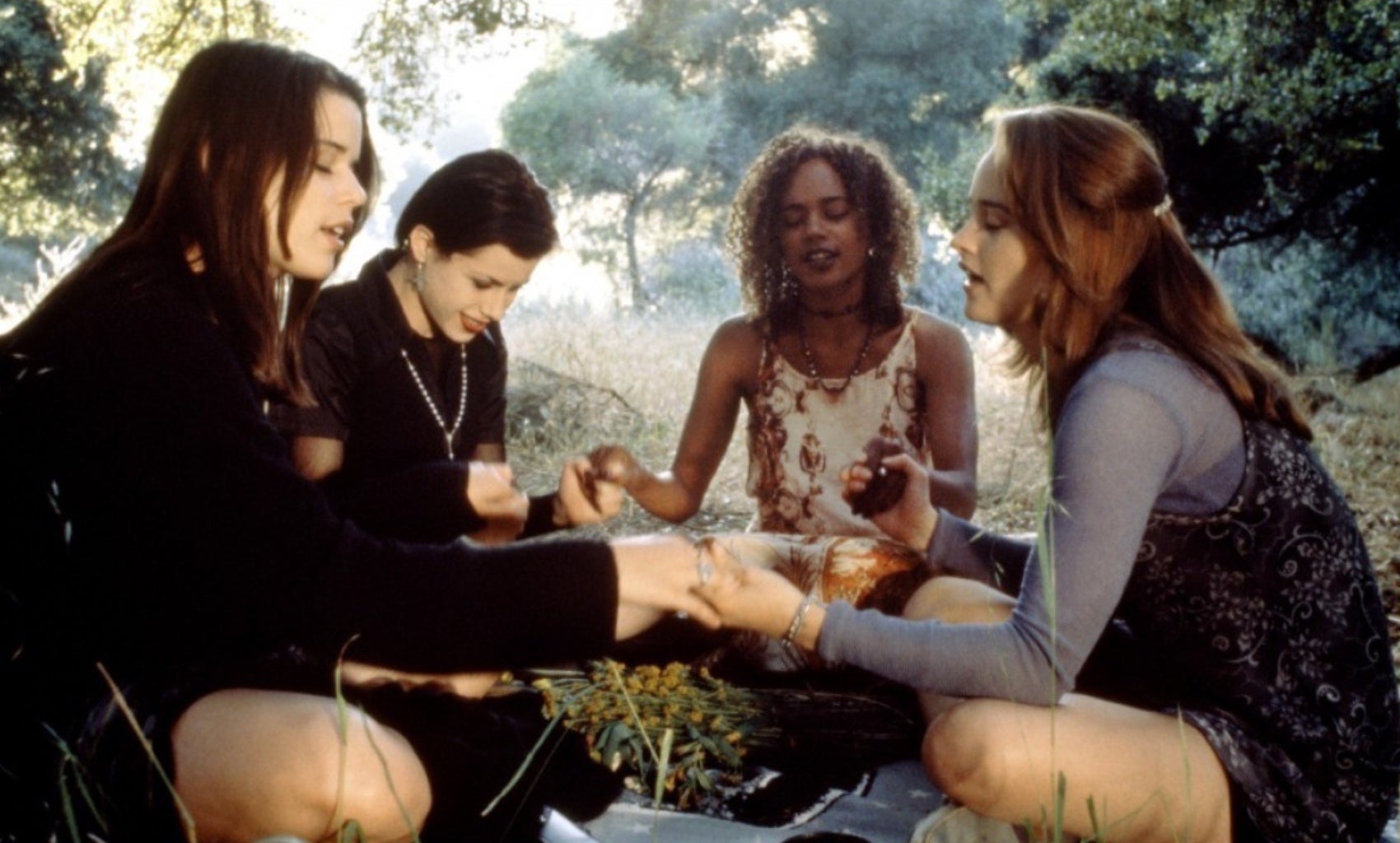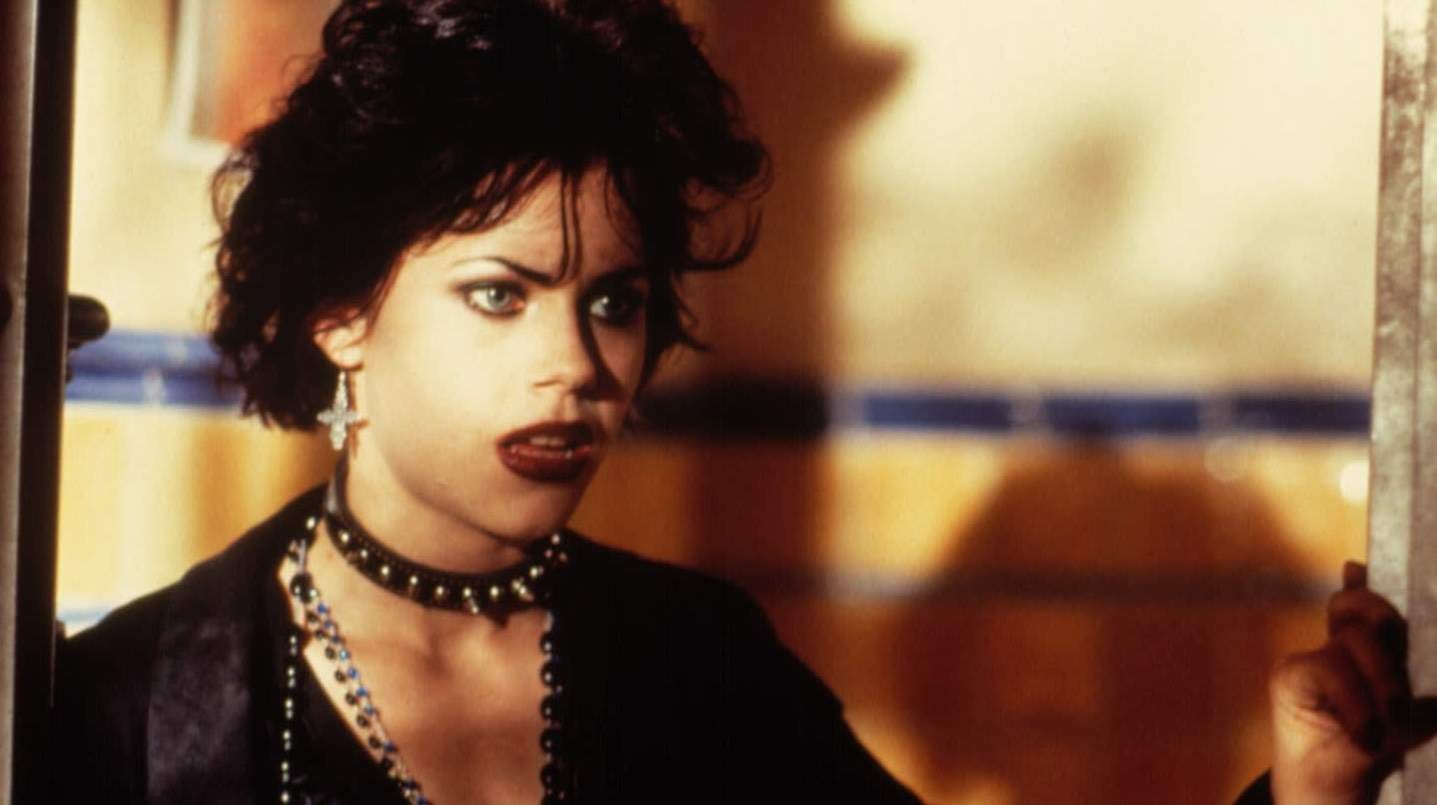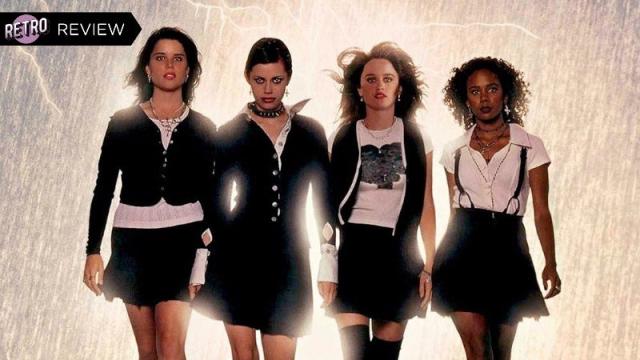Growing up in the 1990s, everyone knew The Craft. It was one of those cool movies you maybe quoted with your friends or watched again and again at a sleepover. The characters were unique and fresh. The material was edgy and provocative. At the time, the film hit such a cultural nerve that people at my high school would just call goth kids “The Craft.” Odd of course, but it showed a certain level of popularity most similar, modestly budged, teen movies never achieved.
That was probably sometime in 1997 or 1998, when The Craft was readily available on home video and a few years after it originally hit theatres on May 3, 1996. Since then, despite knowing of the film and its general themes, I’d somehow never seen it. More surprisingly, neither had my wife, Jayne. So this week we sat down and watched The Craft for its 25th anniversary. Before we hit play, Jayne reiterated it was particularly odd she’d never seen The Craft. It was much easier to imagine myself, a teenage boy at the time, avoiding a movie that skewed toward girls in favour of watching a bunch of dumb Steven Seagal movies. But for a woman of her age to have never seen it was much more of an anomaly.
The tale of four high school girls using witchcraft to manipulate bullies and boys was obviously very formative for teenagers at that time, and probably in the decades since too. We were coming at it in our late-30s/early-40s through a whole new cultural worldview and from that perspective, The Craft is, well, interesting. Directed by Andrew Fleming, from a script by Fleming and Peter Filardi, the film stars Robin Tunney as Sarah, a troubled teenager who moves from San Francisco to Los Angeles.
Turns out, she has some mysterious abilities and quickly falls in with her school’s “weird” girls: Nancy (Fairuza Balk), Bonnie (Neve Campbell), and Rochelle (Rachel True). Nancy and her crew are big-time into witchcraft and believe Sarah’s arrival as a fourth member of their group will finally enable them to do some actual magic. Which ends up being true. But while things start small, they eventually get out of hand, and Sarah finds herself wanting to stop their rampage while Nancy, Bonnie, and Rochelle do not.

The first thing you notice about The Craft is it’s very 1996. In addition to the baggy clothes on the guys, midriff tops on the girls, and grunge on the soundtrack, it borrows heavily from popular 1980s films like Beetlejuice, The Lost Boys, Heathers, and The Breakfast Club. More importantly, the film has a very cavalier, almost indifferent, attitude toward a slew of serious social issues. The story features attempted suicide, rape, racism, peer pressure, bullying, murder, and more, some of which are either glossed over or played for laughs. One such example is Sarah’s crush on a boy named Chris (Skeet Ulrich, who also starred in the high school horror Scream that same year).
Nancy tells Sarah that Chris is a bad guy (him referring to the girls as “The Bitches of Eastwick,” albeit a clever turn of phrase, should’ve been a red flag), but she goes out with him anyway. When she won’t sleep with him though, he spreads rumours at school about her lack of sexual experience. It’s absolutely terrible. He then refuses to apologise, doubles down on being an arsehole, and when Sarah casts a spell asking for anything in the world… she asks for Chris to like her. What in the living hell? Later, thanks to that spell backfiring, he becomes obsessed, stalks her, tries to rape her, and is subsequently killed for it. The whole thing is very uneven and odd.
Another example is Rochelle’s relationship with a girl named Laura (Christine Taylor). They’re on the diving team together (which is a weird, unexplained detail on its own) but Laura taunts and bullies Rochelle because she’s a truly horrible racist. A racist that uses a slur so jaw-droppingly offensive, we had to pause the movie in shock. Of course, it does its job, we hate Laura and Rochelle gets back at her by casting a spell that makes her lose her hair. It’s a worthy bit of revenge until the film shines Laura in a sympathetic light and it seems like Rochelle pities her. Which, one might think, would be a sign of Rochelle’s ability to be a better, forgiving, person. But a few scenes later she’s right alongside Nancy, trying to kill her friend Sarah, who has done nothing wrong except demonstrating the same kind of sympathy. It just doesn’t track.

These and others are issues you probably don’t even think about as a teenager watching The Craft. On its surface, it’s effortlessly entertaining and, in the past, sometimes movies dealt with serious shit in not-so-serious ways — as long as the characters looked cool, acted cool, and did fun stuff, it was forgiven. And maybe it still is, if you connected with the film at that age. Watching it now though, The Craft’s narrative and character issues overshadow all of that. Take the film’s central story, which is prohibitively bare. The story is basically: a new girl moves to town, makes friends, and loses friends. Outside of Sarah discovering who she is by the end, there’s not a ton of change or growth throughout. Unless they’re dead, everyone at the end of the film is basically who they were at the beginning.
The story becomes a skeleton to find tangential excuses for the girls to cast different spells. Admittedly some of that is very cool but it’s also handled so matter-of-factly, a bit of the magic is lost. The girls don’t really seem to care much about the how and why, just whether it will work and what they can personally gain from it. Their lack of wonder and selfish streak undercuts even the most minuscule character development. That also might just be a result of Balk’s unforgettable performance as Nancy. Compared to the other girls, she’s on another level. Scary, intimidating, and sympathetic all at once, she shines so much brighter than everyone else. Tunney, True, and Campbell don’t even attempt to rise to her level. There’s no point. Which is probably why Bonnie and Rochelle’s turns late in the film, from Sarah’s friends to her enemy, and back to friends, feel so rushed and forced. They don’t feel a need to explain it because Nancy’s pure evil is so overwhelming.

All of these issues are ones Jayne and I agreed on when the credits rolled on The Craft. But she also readily admitted that if she had seen the film as a teenager, it probably would have been one of her favourite films ever. The sisterhood, the fierce fashion, the empowerment, all of it was very attractive. She also described it as having a unique “dark sex appeal” and that it was was “all her Hot Topic dreams come to life.” Beyond that, I also noted that the mix of practical and digital effects are used to great effect (All the different snakes in the finale being one example), and there’s an interesting, overall witch mythology that’s teased throughout which is left satisfyingly vague. We both wholeheartedly agreed while Tunny, Campbell, and True are all OK, Balk’s jaw-dropping, starmaking performance was worth mentioning again. In fact, it was probably too good because she went on to play some similar roles in the future (The Waterboy most memorably) and got a little bit typecast as the outsider in the years that followed.
We all have films that really spoke to us growing up. Films we love unabashedly and will never be able to see as flawed because of that personal place they hold in our hearts. For me, it’s The Monster Squad and Rad. For Jayne, it’s The Chipmunk Adventure and Empire Records — and for many, many others, it’s The Craft. Watching it now though, without any real connection, I can’t say it’s great. What I can say is we very easily saw why others might think so and that’s a brand of magic very few films have.
